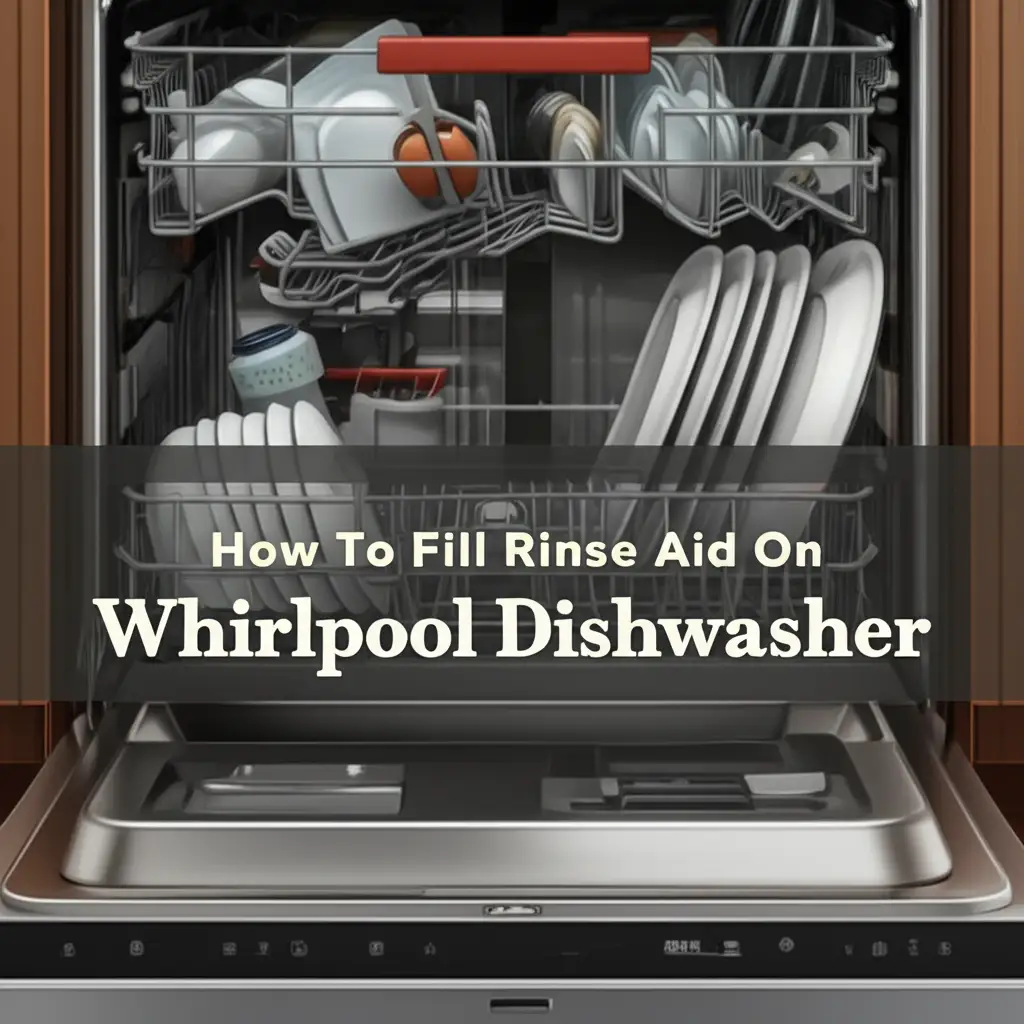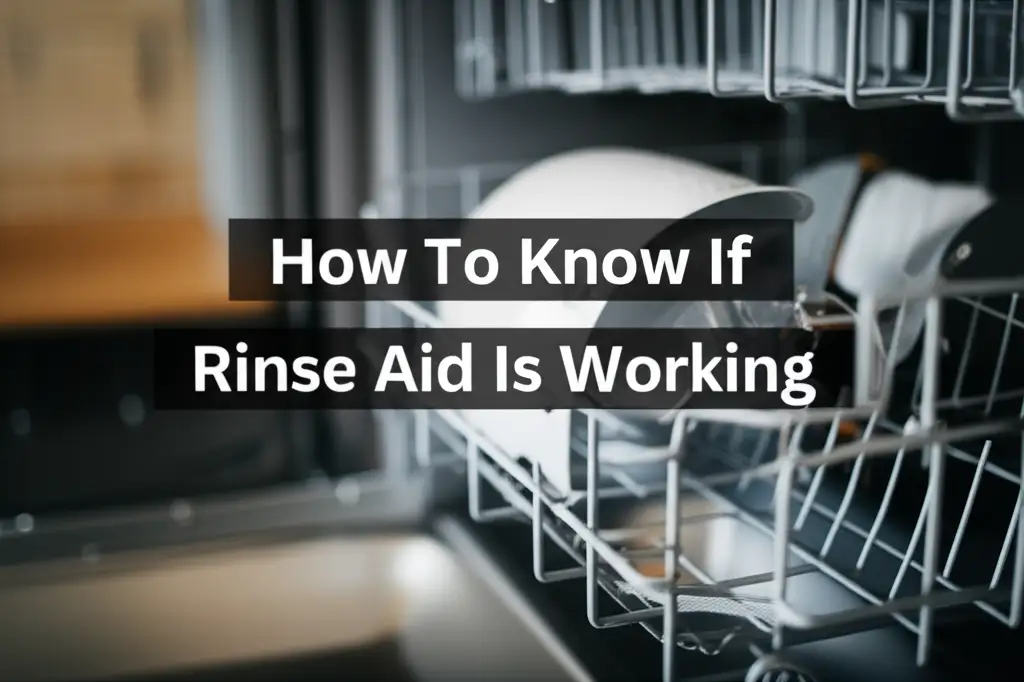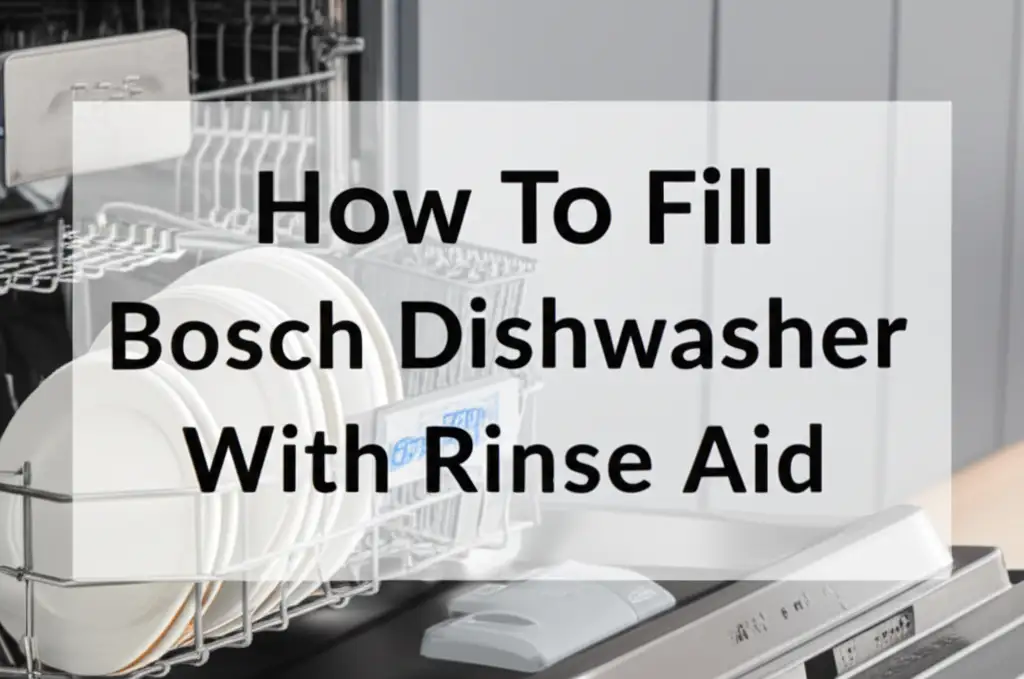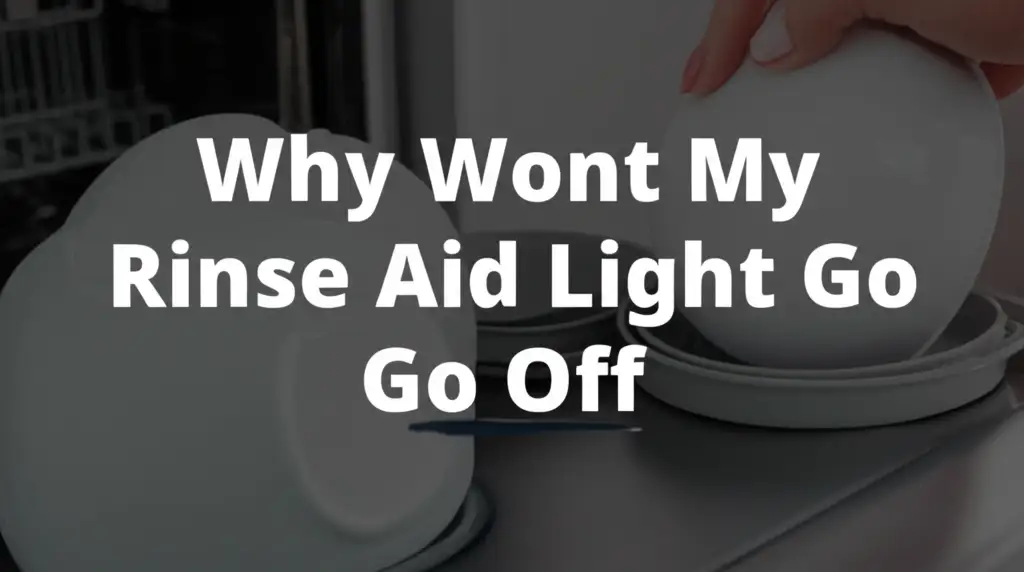· Todd Martin · Dishwasher Maintenance · 16 min read
How To Load Rinse Aid In Bosch Dishwasher
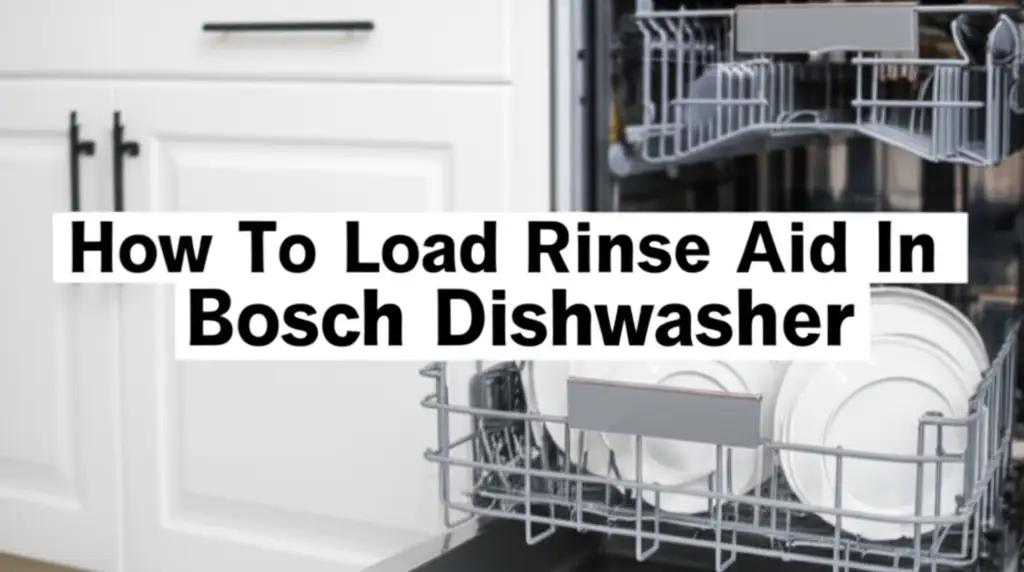
How To Load Rinse Aid In Your Bosch Dishwasher For Spotless Dishes
Imagine opening your dishwasher after a cycle, expecting sparkling clean dishes, only to find them covered in spots or streaks. This is a common issue many homeowners face, and it often points to one missing ingredient: rinse aid. Specifically, knowing how to load rinse aid in your Bosch dishwasher correctly makes all the difference. My own experience taught me that this small step can transform your dishwashing results.
Rinse aid is a crucial component for achieving perfectly dry, shiny dishes, especially with the advanced drying systems of Bosch dishwashers. It helps water sheet off surfaces, preventing droplets from drying and leaving mineral deposits. This article will guide you through the simple process of adding rinse aid to your Bosch appliance. We will cover locating the dispenser, the proper filling technique, and how to adjust settings for the best performance. Get ready to enjoy truly spotless dishes with every wash.
Takeaway
- Locate the dispenser: Find the rinse aid compartment near the detergent dispenser inside the dishwasher door.
- Open the cap: Twist or pull the cap to open the dispenser.
- Pour in rinse aid: Fill the compartment slowly until the indicator shows “max.”
- Clean spills: Wipe up any spills to prevent excessive suds.
- Close the cap: Securely close the cap after filling.
Loading rinse aid in your Bosch dishwasher ensures streak-free, spot-free dishes by promoting faster drying and preventing water spots. Find the rinse aid dispenser next to the detergent dispenser, open its cap, and carefully pour in liquid rinse aid until the indicator shows it is full. Close the cap securely, and wipe away any spills.
Understanding Rinse Aid: Why It Matters for Your Bosch Dishwasher
Have you ever wondered why your dishes come out with water spots or feel wet, even after a full wash cycle? The answer often lies with rinse aid. This liquid product is a vital part of the dishwashing process, especially for high-performance Bosch dishwashers. Rinse aid works by reducing the surface tension of water.
When water has lower surface tension, it cannot cling to your dishes. Instead, it forms sheets and runs off quickly. This action helps water drain away more efficiently from dishes, glassware, and cutlery. The result is significantly faster drying times and the elimination of those annoying water spots and streaks. Without rinse aid, hard water minerals can dry onto your dishes, leaving visible residue.
Bosch dishwashers are engineered for quiet operation and efficient cleaning, and rinse aid complements these features perfectly. It ensures the water effectively drains from the dishes during the final rinse cycle. This prevents moisture from lingering, which is key for the condensation drying that many Bosch models use. Using rinse aid helps the dishwasher’s drying cycle work as intended. It gives you the best possible cleaning and drying performance. For more information on why this simple addition is so important, learn why you need rinse aid in your dishwasher.
Beyond just preventing spots, rinse aid also helps to enhance the shine of your glassware. It makes your dishes look truly sparkling clean. This makes it an essential part of your dishwashing routine, not just an optional extra. It prolongs the pristine appearance of your dishes. Regular use of rinse aid ensures your Bosch dishwasher always delivers the brilliant results you expect.
Locating the Rinse Aid Dispenser in Your Bosch Dishwasher
Finding the rinse aid dispenser in your Bosch dishwasher is a simple task. It is usually in a very convenient and easy-to-access location. The dispenser is typically found inside the dishwasher door itself. You will see it right next to the main detergent dispenser.
Look for a small compartment, often with a cap that can be twisted or pulled open. This cap usually has a clear indicator to show the rinse aid level. Some models might have a small window or a marked line to guide you. This design makes it easy to check the rinse aid status at a glance. My first time looking for it, I noticed how intuitive the placement was.
The rinse aid dispenser is specifically designed to release a small, measured amount of liquid during the final rinse cycle. It is separate from where you put your dishwashing detergent. This ensures that the rinse aid is only introduced at the correct stage of the wash cycle. It prevents it from mixing with the soap earlier on. Different Bosch models may have slightly varied cap designs, but the general location remains consistent.
You might find a symbol on the cap or near the dispenser that looks like a small starburst or a fan-like icon. This symbol universally represents the rinse aid compartment. This visual cue helps you quickly identify the correct opening. Taking a moment to familiarize yourself with this area of your dishwasher door will make future refills quicker and easier. It is a critical first step before you learn how to load rinse aid in Bosch dishwasher.
Step-by-Step Guide: How to Load Rinse Aid in Bosch Dishwasher
Loading rinse aid into your Bosch dishwasher is a straightforward process. Following these steps ensures you do it correctly for optimal performance. I found these steps to be very helpful the first time I did it. Proper loading helps your dishes come out spotless and dry.
1. Open the Dishwasher Door
First, fully open the door of your Bosch dishwasher. This gives you full access to the interior. Ensure no dishes or racks block your view or access to the dispenser area. A clear workspace prevents spills and makes the process easier.
2. Locate the Rinse Aid Dispenser
As discussed, the rinse aid dispenser is usually right next to the detergent dispenser. It is inside the dishwasher door. Look for a circular or rectangular cap. This cap often has a starburst or fan symbol on it. This symbol tells you it is the rinse aid compartment.
3. Open the Dispenser Cap
The cap typically opens in one of two ways. You might need to twist it counter-clockwise to unlock and remove it. Alternatively, some caps are a simple pull-up design. Carefully open the cap without forcing it. You will hear a click or feel a slight resistance as it opens.
4. Pour in the Rinse Aid
Hold the rinse aid bottle steadily and carefully pour the liquid into the dispenser opening. Pour slowly to avoid overfilling or spills. The dispenser has a fill line or indicator window. Fill it only up to the “MAX” line. Do not go beyond this line.
5. Wipe Up Any Spills
If you accidentally spill any rinse aid on the dishwasher door or inside the tub, immediately wipe it up with a damp cloth. Spilled rinse aid can cause excessive suds during the wash cycle. This can lead to poor cleaning results or even an overflow. Cleaning up prevents problems later.
6. Close the Dispenser Cap
Once filled, securely close the dispenser cap. Twist it clockwise until it clicks into place. If it is a pull-up cap, push it down firmly until it locks. A properly closed cap prevents rinse aid from leaking out during the wash cycle. It also ensures proper dispensing.
Following these steps will properly load rinse aid into your Bosch dishwasher. This ensures consistent, excellent dishwashing results every time. For a more detailed look at filling, refer to this guide on how to fill Bosch dishwasher with rinse aid.
Filling and Avoiding Overfilling: Best Practices for Rinse Aid
When you load rinse aid in Bosch dishwasher, proper filling is critical. It ensures effective performance and prevents potential issues. Many people simply pour it in without thinking, but a few best practices can make a big difference. I learned these tricks after a few messy experiences.
First, always use a funnel if the rinse aid bottle has a wide spout. This simple tool helps direct the liquid into the small dispenser opening. It significantly reduces the chance of spills. Spilling rinse aid can lead to excess suds in your dishwasher, which is not ideal.
Second, pay close attention to the “MAX” fill line or indicator window. Bosch rinse aid dispensers are designed to hold a specific amount. Overfilling can cause several problems. If you put too much rinse aid, it might leak out into the dishwasher tub before the proper cycle begins. This can create excessive foam during the main wash. Too much foam impairs cleaning performance and can leave a cloudy residue on your dishes.
Additionally, overfilling means you might waste rinse aid. It will be dispensed improperly or leak out. This makes your supply run out faster than it should. It also means your dishes might not get the correct amount at the right time. An accurate fill ensures the rinse aid lasts longer and works as intended.
Immediately clean any spills around the dispenser or on the door. Rinse aid is sticky and can attract dust and dirt. More importantly, excess rinse aid inside the tub can interfere with the washing process. If you have overfilled and need to remove some, check out tips on how to get rinse aid out of your dishwasher. Wiping spills also prevents a soapy residue on the exterior of your dishwasher. It keeps your appliance looking clean and well-maintained. Following these best practices will help you use rinse aid efficiently and achieve perfectly spot-free dishes.
Adjusting Rinse Aid Dosage for Optimal Results
After you load rinse aid in Bosch dishwasher, you can fine-tune its performance. Bosch dishwashers allow you to adjust the rinse aid dosage. This feature is very helpful for achieving optimal drying and shine based on your specific water conditions. Water hardness varies greatly by region, and this adjustment helps you compensate. I found that adjusting the dosage helped my dishes get perfectly dry, not just mostly dry.
If you notice streaks or a blue film on your dishes, you might be using too much rinse aid. This means the dosage setting is too high for your water. On the other hand, if dishes are still wet, have water spots, or appear cloudy, you might need more rinse aid. In this case, the current dosage is likely too low. Adjusting the setting addresses these issues directly.
To adjust the rinse aid dosage, you will typically access this setting through the dishwasher’s control panel. The exact steps vary by Bosch model. Generally, you need to enter a programming mode. This might involve holding down a specific button combination or pressing a button repeatedly. Consult your Bosch dishwasher’s user manual for precise instructions for your model. The manual will show you how to navigate the settings.
Once in the programming mode, you can usually select a dosage level from 0 to 6. Level 0 means no rinse aid is dispensed. Level 1 is the lowest amount, and level 6 is the highest. Most Bosch dishwashers come with a factory setting around level 3 or 4. Start with the recommended setting in your manual. Then, adjust it up or down by one level at a time. Run a few cycles and observe the results. This trial-and-error approach helps you find the perfect balance. If you are struggling with this setting, understanding how to turn on rinse aid in your Bosch dishwasher might also offer some insights. Finding the right dosage guarantees spotless dishes.
Recognizing When to Refill Rinse Aid: Indicators and Warnings
Knowing when to load rinse aid in Bosch dishwasher is as important as knowing how. Your Bosch dishwasher comes equipped with helpful indicators to tell you when the rinse aid level is low. Paying attention to these signals prevents you from running out unexpectedly. This ensures your dishes always come out spotless.
The most common indicator is a specific rinse aid light on your dishwasher’s control panel. This light usually looks like a starburst or a fan symbol, matching the symbol on the rinse aid dispenser cap. When this light illuminates, it means the rinse aid compartment is nearing empty. It is your cue to refill it soon. I always keep an eye on this light; it’s my first sign to check.
Some Bosch models might have a small indicator window directly on the dispenser itself. This window changes color or shows a visual cue (like a “full” or “empty” marking) to indicate the level. When the indicator window shows “empty” or a similar warning, it is time to add more rinse aid. This visual check is helpful if you prefer to see the physical level.
Beyond the official indicators, you can also tell by the appearance of your dishes. If you start noticing water spots, streaks, or a cloudy film on your glassware and cutlery after a wash cycle, it is a strong sign that your rinse aid is low or completely depleted. The dishes might also feel wetter than usual. This means the rinse aid is not effectively helping water shed off. These visual cues are just as important as the light. For a deeper dive into what that light means, check out why the rinse aid light is on your dishwasher.
It is a good habit to check the rinse aid level regularly, perhaps once a week or every few cycles. This proactive approach ensures you always have enough. Consistent use of rinse aid helps maintain the performance of your Bosch dishwasher. It keeps your dishes looking their best. Waiting until the light comes on means you might have a cycle or two of less-than-perfect dishes. Regular checks avoid this problem.
Troubleshooting Common Rinse Aid Issues with Bosch Dishwashers
Even after you load rinse aid in Bosch dishwasher correctly, you might encounter some issues. Don’t worry; most rinse aid problems are easy to troubleshoot. Understanding common glitches helps you keep your dishwasher running smoothly. I have faced a few of these myself and found the solutions to be quite simple.
One frequent issue is the rinse aid light staying on even after refilling. This can be frustrating. Often, this happens if the dispenser cap was not closed properly or if the sensor is blocked. First, ensure the cap is tightly sealed. Then, check for any rinse aid spills around the sensor or within the compartment. Sometimes, a tiny bit of dried rinse aid can interfere with the sensor’s ability to read the level. Wiping it clean usually fixes this. If the light persists, the sensor itself might need professional attention, but this is less common.
Another common concern is your Bosch dishwasher using too much rinse aid. If you find yourself refilling the dispenser very frequently, the dosage setting might be too high. As discussed earlier, Bosch dishwashers have adjustable dosage settings. Consult your manual to lower the setting by one level. Observe the dishes over a few cycles. A lower setting saves rinse aid and prevents excessive foaming or streaks. For more insights on this specific problem, read why your Bosch dishwasher uses so much rinse aid.
Conversely, if dishes are still wet or spotty despite having rinse aid, the dosage might be too low. Increase the dosage setting by one level. Alternatively, ensure you are using a good quality rinse aid. Sometimes, cheaper brands are not as effective. Make sure the rinse aid is not expired. Old rinse aid can lose its effectiveness over time.
Finally, some users report the Bosch dishwasher constantly asking for rinse aid. This can happen even after it has been filled. Besides the sensor issue mentioned earlier, it could be a sign of a very slow leak from the dispenser itself. Check for any cracks or damage to the dispenser unit. If you suspect a leak, it might require a part replacement. Otherwise, it is typically a sensor or dosage setting problem. For a detailed look at this specific concern, check out why your Bosch dishwasher keeps asking for rinse aid. Regular maintenance and quick troubleshooting keep your Bosch dishwasher in top shape.
FAQ Section
How often should I load rinse aid in my Bosch dishwasher?
The frequency depends on your usage and the rinse aid dosage setting. Most Bosch dishwashers need a refill every 1-3 months. Your dishwasher’s rinse aid indicator light will tell you when it is low. You can also check the level indicator on the dispenser itself. Regular checks ensure you do not run out.
Can I use vinegar as a rinse aid in my Bosch dishwasher?
While some people use white vinegar as a natural alternative, Bosch does not recommend it. Vinegar is acidic and can potentially damage rubber seals and plastic components over time. It can also void your warranty. For optimal performance and appliance longevity, use a commercial rinse aid designed for dishwashers.
What happens if I don’t use rinse aid in my Bosch dishwasher?
If you do not use rinse aid, your dishes may come out with water spots, streaks, or a cloudy film. They might also remain wetter after the drying cycle. This is especially true with Bosch dishwashers that rely on condensation drying. Rinse aid is essential for truly spotless and dry results.
Why is my Bosch dishwasher still leaving spots with rinse aid?
Several reasons can cause spots despite using rinse aid. Your rinse aid dosage might be too low. Try increasing the setting by one level. Your water hardness could be very high, requiring more rinse aid. Old or expired rinse aid can be ineffective. Also, ensure you are not overfilling, as too much can also leave a film.
How do I know if my Bosch dishwasher dispenser is broken?
Signs of a broken dispenser include visible leaks from the compartment. The rinse aid light stays on even after filling and troubleshooting. You might notice rinse aid being consumed too quickly or not at all. If the cap does not close securely, it might also be damaged. In such cases, professional service might be needed.
Is rinse aid necessary with all-in-one dishwasher tablets?
Many all-in-one tablets contain rinse aid. For areas with soft to medium water hardness, these tablets might be sufficient. However, for hard water areas or if you still see spots, adding separate liquid rinse aid is recommended. Bosch dishwashers often perform best with separate rinse aid. This is due to their drying systems.
Conclusion
Loading rinse aid in your Bosch dishwasher is a simple yet incredibly effective step. It ensures your dishes come out consistently spotless, dry, and sparkling. We have covered every aspect, from locating the dispenser to troubleshooting common issues. By following these straightforward instructions, you can transform your dishwashing experience. I can attest to the difference it makes in my own home.
Remember, rinse aid plays a crucial role in preventing water spots and accelerating the drying process. This makes it an indispensable part of maintaining your Bosch dishwasher’s top performance. Regularly checking your rinse aid level and adjusting the dosage as needed will guarantee brilliant results every time. Take control of your dishwashing routine. Properly load rinse aid in your Bosch dishwasher today. Enjoy the satisfaction of perfectly clean dishes with every cycle. Your dishes, and your peace of mind, will thank you.


